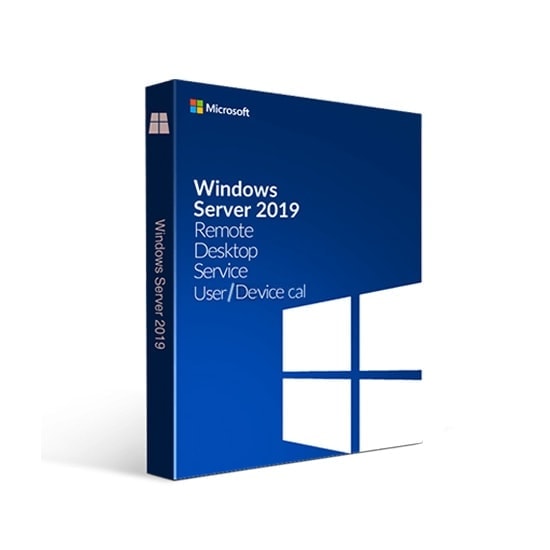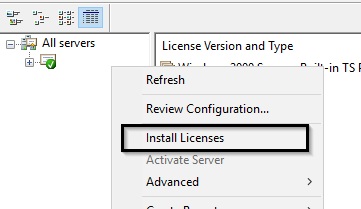
- #Windows server 2016 remote desktop services 20 user cal install
- #Windows server 2016 remote desktop services 20 user cal windows
#Windows server 2016 remote desktop services 20 user cal windows
The installed operation system is Windows Server 2016 or Windows Server 2019 with patches until February 2019. The ideal RDSH virtual machine setup in this configuration is 8 virtual machines with 8 vCPU each. You can read more about this Nutanix-lab infrastructure here. VMware ESXi 6.7U1 was used during these tests. That means a total of 32 physical CPU cores are present and with Hyperthreading enabled 64 logical CPU cores are available. This CPU is based on a Skylake architecture, containing 16 cores. For this test, a node with a dual socket Intel Xeon Gold 6130 Processor was used. The storage in the other nodes in the cluster was presented by the Nutanix distributed file system (DFS) and accessed by the test-node over NFS. In a Nutanix cluster a controller VM (CVM) is present on each Nutanix node, but for these tests, the CVM was powered off on the test-node. The node on which the tests were performed is part of a 4-node cluster. The tests for this research were performed on a Nutanix-lab environment. *Update: On July 1 2019, Microsoft announced that Office 365 will be supported on Windows Server 2019. Microsoft would love to see you migrate to Windows Virtual Desktop (which is also multi-session), but that is only available on Azure. If you have Office 365 licensing or Office 2016 perpetual, you are forced to stay on Windows Server 2016 or move to VDI. In my opinion, you would need to have a very good reason to use Windows Server 2019 instead of 2016 for RDSH. Office versionĪs you can see, only Office 2019 perpetual licensing is supported on Windows Server 2019. In the following table you can see the support of the different Office versions on Windows Server 20.

If you are providing access to Microsoft Office applications through RDSH, you must be aware of the support status of Microsoft Office on specific operating system versions. One thing you don’t want is a lower user density when changing the operating system of the RDSH servers (unless it will offer new functionality or offer a better user experience, then you might accept the lower user density). Sharing the operating system with multiple users allows you to host more users per physical server than you could host with VDI. One of the reasons to choose RDSH over VDI is the higher user density you (should) get. You can use RDSH in the plain vanilla Microsoft variant or use for example Citrix Virtual Apps and Desktops (formally known as XenApp), VMware Horizon, Parallels Remote Application Server or another product on top of RDSH. RDSH, or Server Based Computing (SBC) as we used to call it, can be used in different flavors.

There are other considerations as well, application compatibility and support for example, but this research will focus on the impact on performance and capacity. Please like and share this guide to help others.If you are thinking about updating your Remote Desktop Session Host (RDSH) environment from Windows Server 2016 to Windows Server 2019, one of the considerations is the impact this change has on user density and performance. That's it! Let me know if this guide has helped you by leaving your comment about your experience. If the problem persists, try using a different connection method.", read this tutorial. Check all the information you provided, make any necessary corrections, and then resubmit your request. * Note: If the RDS Licenses installation fails with error message "The licensing agreement data provided to Microsoft is not valid. Once the installation is successful click Finish to close the wizard.
#Windows server 2016 remote desktop services 20 user cal install
Wait the license manager to validate the information you entered and to install the RDS CALs. Now, select your Product version (Server Version), the License type and then enter the quantity of the RDS licenses you have purchased (e.g."10"). the Authorization Number and the License Number) and click Next.Ħ. At the next screen, type the License information (e.g. Choose the License Program you purchased your RDS CALs from (e.g. Click Next at 'Welcome to the Install Licenses Wizard'.Ĥ. Right click on the server name and select Install Licenses.ģ.


* Or navigate to Control Panel -> Administrative Tools -> Remote Desktop Services > Remote Desktop Licensing Manager. Open the Server Manager and from the Tools menu go to Remote Desktop Services > Remote Desktop Licensing Manager. To install or to add additional RDS Cals on a Windows RDS Server 2019 or Server 2016:ġ. If you have already installed and activated the Remote Desktop License Server and you want to install the Remote Desktop Services client access licenses (CALs) on the license server, then read the instructions below.


 0 kommentar(er)
0 kommentar(er)
